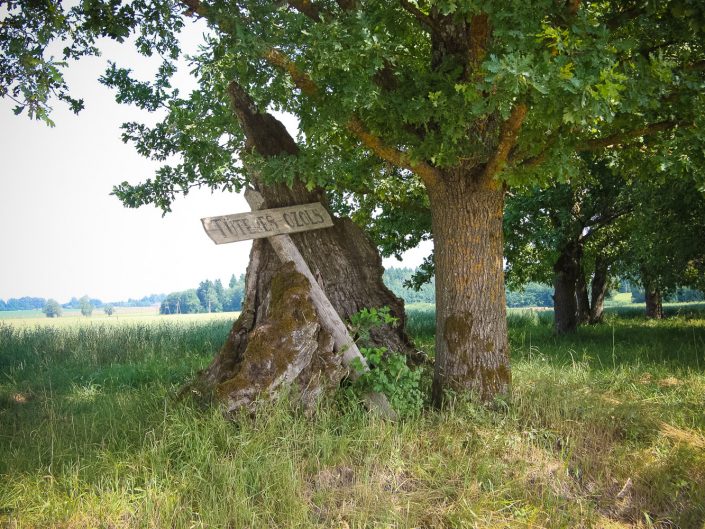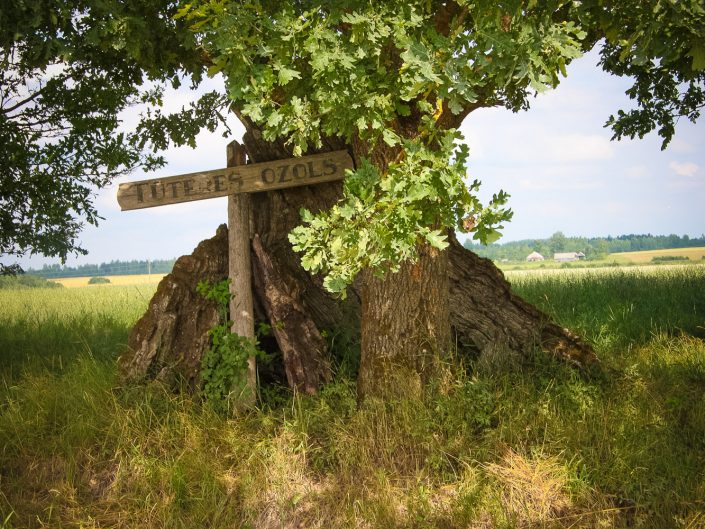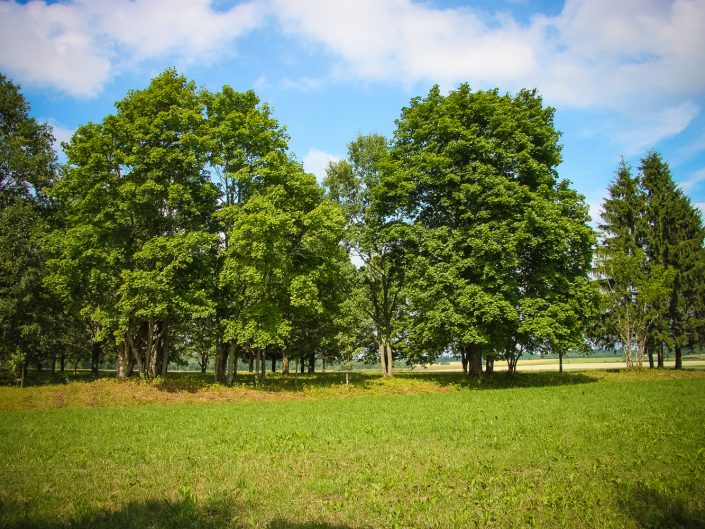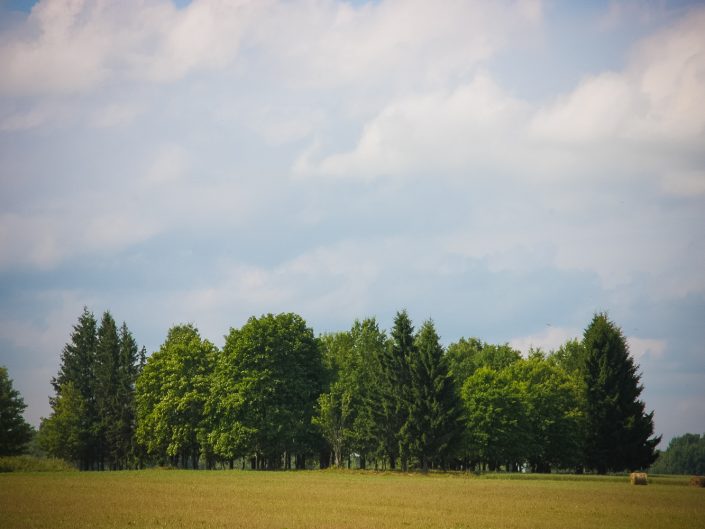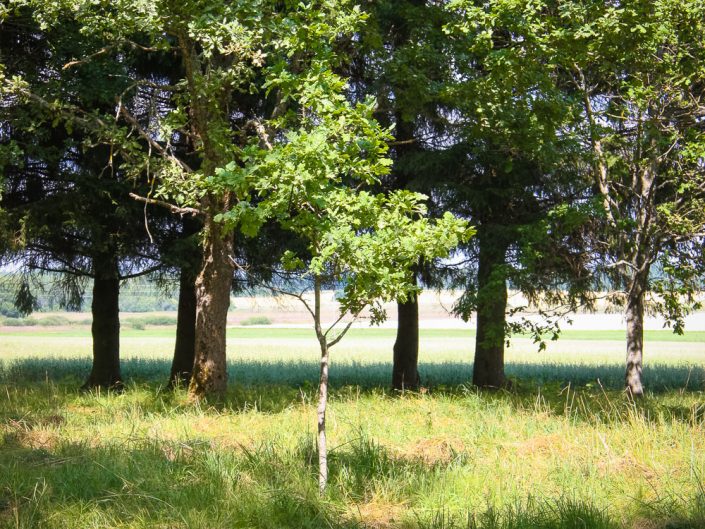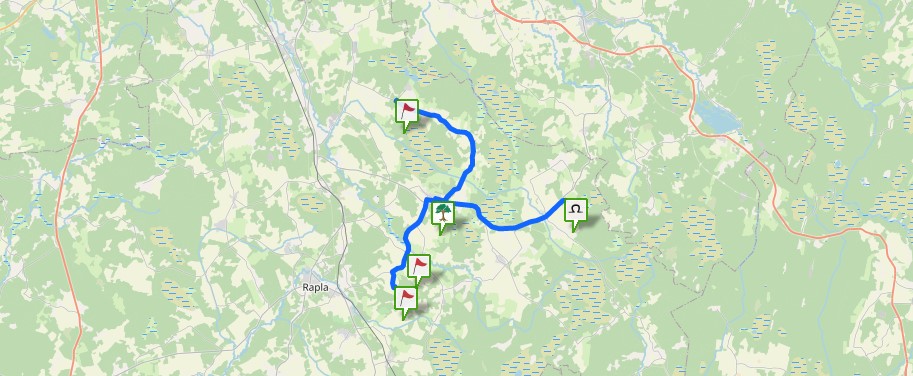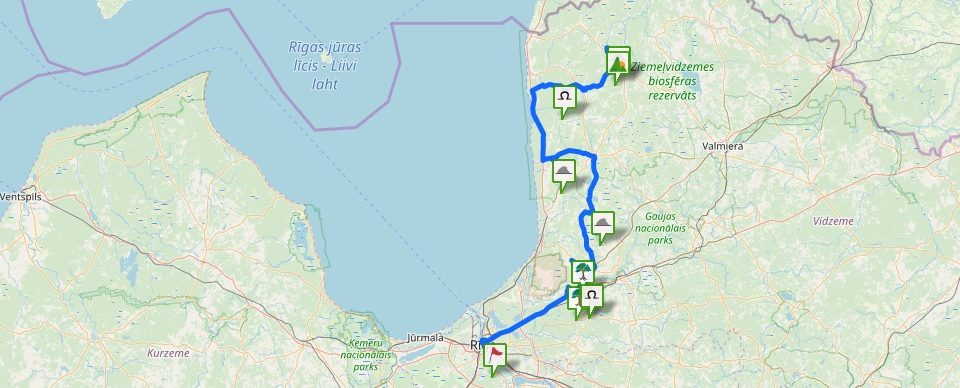State archaeological heritage (State Inspection for Heritage Protection, No 2507). One of the most popular ancestors’ holy oaks wrapped up in tales, whereas the oak’s relation to cult activities is clearly seen (sacrificing, worshipping, commemorating the dead). The first recorded rituals, it seems, are dating back to 1127 when sāmsalieši (inhabitants of the Saaremaa Island) sacrificed a ram taken away from a local landlord. The circumference was 8.5 m, height of 10 m, age of 450. Nowadays only the oak’s site has remained (it broke down in a storm of 1967), right next to it a new oak is growing that has been planted from an acorn of the Tūtere Oak. It is worth mentioning that parts of the broken oak trunk were used by a wood carving artist Valters Hirte, and it can be partially seen in the Museum of Mazsalaca. Currently around the oak site a whole oak grove is growing. Nearby is Mazsalaca, Dreimaņi Devil’s Oak, Aņģīši Devil’s Stone and other.
“In the Valmiera County, in the Košķile Parish at the Tūtere homestead there is a large oak. A tale narrates that this oak has grown out of an oak stick that was stuck into the ground by a Swedish king when he departed from our land. Now this oak is banded to hold it together. Thirteen persons can come together in the middle of the oak.” (Recorded by R. Holste, 1938. FS 834, 4515. Latvian Folk Tales: Selection (Latviešu tautas teikas: Izlase). 1961. Compiled by A. Ancelāne) Another tale narrates that during the invasion of the Ivan the Terrible, Russian solders tied the owner of the Tūteri to the oak. They wanted to make him tell where they could get a good trophy. As the man said nothing, the solders started to torture him, burnt his feet. Tūters pleaded his ancestors’ God for help who gave him such strength through the oak that the man tore off the ropes, grabbed a carriage thill and killed with it 12 attackers. (G. Eniņš. 2008. 100 Most Secular and Holiest (100 Dižākie un svētākie.)) An irrational tale narrates that the oak had been there already since the Noah’s times, in other tales we can read that there both the Lithuanian king Ģedimins (1322) had a rest when passing by this area and regiments of Peter I (1708); in 1208 German crusaders, when returning from Sakala, demolished the sacrificial altars. In 1127 sāmsalieši (inhabitants of the Saaremaa Island), when marauding at Metsepole, sacrificed a ram robbed from a local farmer. In 1808 during the time of cholera at the oak there were mourning ceremonies held. The storm of 1967 broke down the famous tree (its age was estimated from 900 to 1000 years); a wood carving artist from Mazsalaca Valters Hirte used its wood for carving his pieces of art. 10 years before the oak broke down, Hirte had planted oak acorns. Currently on the site of the former oak an oak grove flourishes. (G. Eniņš. 100 Most Secular and Holiest (100 Dižākie un svētākie). 2008)

